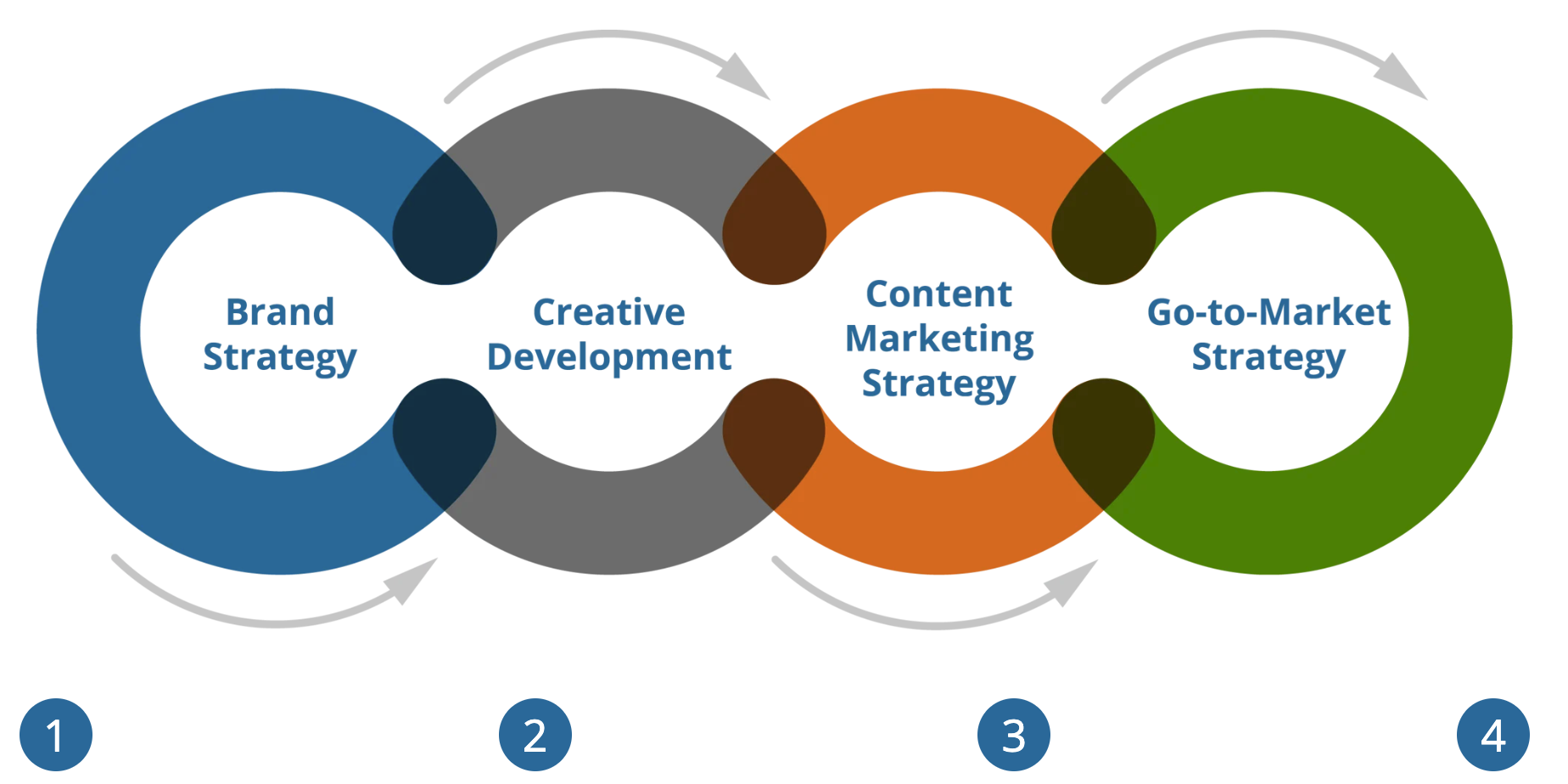Summary:
- Many businesses struggle with brand visibility and lead generation.
- Palmer’s 4-phase process helps you build a strong marketing foundation.
- Phase 1: Develop a clear brand strategy that defines your purpose and value.
- Phase 2: Create engaging, emotionally resonant visual and messaging assets.
- Phase 3: Use content marketing (SEO, email, blogs, social) to drive organic leads.
- Phase 4: Execute a go-to-market plan to capture, convert, and retain customers.
Are you struggling to build your brand, generate leads and grow your business?
You’re not alone. Many companies struggle to find differentiation in competitive industries. However, the right approach can guide you through brand awareness and lead generation, making it simple to start and increase your revenue.
After nearly four decades in traditional and digital marketing, Palmer has created our four-phase process. This proven method will help you identify problems and opportunities and build successful strategies to increase leads and reach your sales goals.
Here’s a look at each phase, from solidifying your brand through going to market, for a better understanding of how your marketing can move your business forward.
Phase 1 Brand strategy
A brand needs to stand out, be relevant and express a unique solution. A clear brand strategy is the epicenter of a successful business. Well-defined branding not only differentiates your company by highlighting your unique value proposition but also builds credibility and trust with prospects.
A brand strategy:
- Defines the business purpose in a clear and meaningful manner.
- Illustrates your competitive advantage in your market segment.
- Aligns messaging across all sales and market channels.
The first phase of our process focuses on building a brand story that will result in competitive differentiation and help form a comprehensive guideline for all of your branded communications and marketing. From evaluating where you are now to defining objectives, performing internal and competitive research and creating an all-inclusive guide, a brand strategy will center your sales and marketing efforts.

Phase 2 Creative development
After establishing comprehensive guidelines for all your communications and marketing in your brand strategy, the next phase is to develop your creative assets. Your company’s creative should evoke emotion and elicit customer and prospect responses. Your business’s look can build off the brand persona, tone and other messaging you developed in your brand strategy for an aligned brand experience that viewers will remember.
Creative development is a process that involves collaboration between designers, executives, the marketing and sales teams, and other departments.
Three steps to successfully developing and deploying your new creative:
- Develop direction options.
- Work into inbound and outbound marketing.
- Maintain message consistency.

Once the team decides on an approach, it’s important to carry it throughout your marketing.
Phase 3 Content marketing
When you have your brand strategy and creative assets, you can start to share your messaging in numerous ways through content marketing. A content marketing strategy is a digital organic approach that encompasses different types of messaging working together to drive people to your site.

Today’s content marketing uses stories and information that prospects seek out in their research, rather than pushing your products and services. An effective digital marketing strategy can bring in digital organic leads that convert at 16% or more.
Elements of content marketing can include:
- Social media
- Public relations
- Blogs
- Marketing automation
- Email marketing
- SEO
Successful content marketing depends on seamlessly integrating these various messaging elements to reach and engage with your target audience.
Phase 4 Go-to-market strategy
Having a solid brand strategy and compelling creative assets in hand, you can take the final critical step in differentiating your brand with a go-to-market strategy. This plan serves as a blueprint for introducing your products or services to the market, capturing attention, generating leads and ultimately achieving your sales targets.

Pillars of a successful go-to-market strategy:
- Brand (Brand Story)
- Buyer’s Journey
- Content Marketing
- Inbound Marketing
- Outbound Marketing
- Public Relations
- Marketing Automation
- Website Conversion
- Referral Program
- Reputation Management
A successful go-to-market strategy blends inbound marketing, outbound marketing and public relations to create differentiation and encourage lead generation. Inbound marketing attracts prospects, while outbound marketing proactively reaches out to potential customers and public relations amplifies both efforts. Every pillar of a go-to-market strategy works together to help your brand stand out in the marketplace, driving leads.
Each phase of our process will help lead you closer to developing a marketing program to increase business. If you need additional help implementing any or all the strategies, Palmer’s experienced marketing team is here as your trusted guide.
FAQs
What is Palmer’s 4-phase marketing process?
Palmer’s process includes Brand Strategy, Creative Development, Content Marketing, and Go-to-Market Strategy—designed to increase brand awareness and lead generation.
Why is brand strategy the first step to driving revenue?
A clear brand strategy helps you define your purpose, establish market positioning, and align messaging across all platforms for maximum impact.
How does creative development support lead generation?
Effective creative assets grab attention and evoke emotional responses, helping prospects engage with your brand and take action.
What does content marketing include in this process?
Content marketing includes SEO, blog writing, social media, PR, email marketing, and automation—working together to attract and convert leads organically.
How does a go-to-market strategy help increase ROI?
It combines inbound and outbound marketing, public relations, and conversion tactics to create a unified path from awareness to action—boosting sales and ROI.
Looking for assistance with increasing brand awareness and generating leads? Schedule a free consultation with us!





